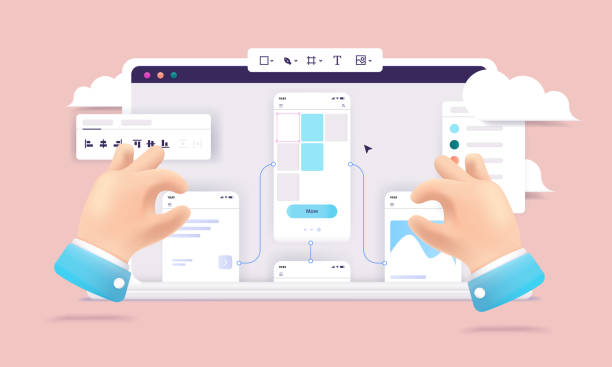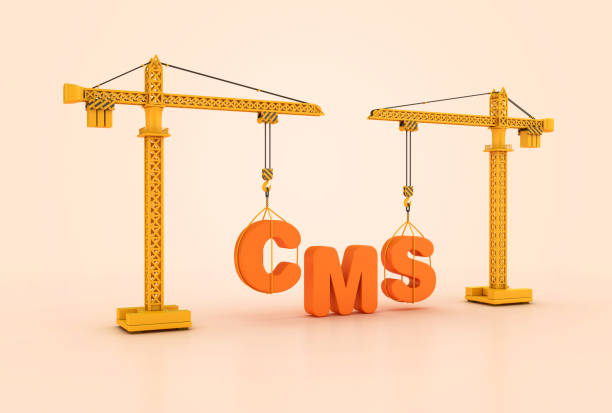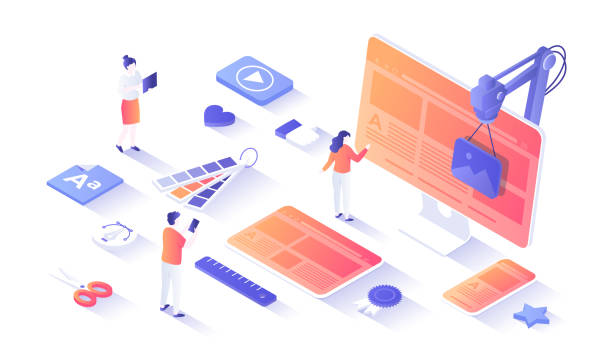Websites are the cornerstone of any business's online presence. From simple informational sites to complex e-commerce platforms, the type of website development you choose can significantly impact your brand's success. But did you know there are various types of website development, each serving unique purposes?

Types of Website Development | A Complete Guide
In this blog, we'll break down the primary types of website development and how each one can help you achieve your digital goals. Whether you're planning to hire a website development company or simply exploring your options, understanding these types can set you on the right path.
1. Front-End Development (Client-Side Development)
What It Is:
Front-end development, often called client-side development, focuses on everything users see and interact with directly. This involves coding for elements like the layout, design, navigation, and overall look and feel of a website. It’s all about creating a visually appealing and user-friendly experience.
Technologies Used:
Popular languages and frameworks include HTML, CSS, JavaScript, React, Angular, and Vue.js.
Ideal For:
Any business or website development company aiming to create an engaging user experience, focusing on design and interactive elements to captivate visitors.
2. Back-End Development (Server-Side Development)
What It Is:
Back-end development is all about the "behind-the-scenes" workings of a website. While front-end development is responsible for what users see, back-end development ensures that the website functions smoothly. This includes databases, server management, and the logic that powers web applications.
Technologies Used:
Languages like Python, PHP, Ruby, Java, and frameworks such as Node.js, Django, and Laravel are commonly used.
Ideal For:
Businesses that rely on data-driven websites or web applications, as back-end development is essential for managing data, processing requests, and maintaining website functionality.

3. Full-Stack Development
What It Is:
Full-stack development combines both front-end and back-end development skills. A full-stack developer is proficient in both, allowing them to create a complete, end-to-end solution.
Technologies Used:
A full-stack developer might use front-end frameworks like React alongside back-end frameworks such as Express or Django, depending on project requirements.
Ideal For:
A website development company that offers full-stack development services can manage entire projects from start to finish. This is beneficial for businesses looking for a one-stop solution that handles both the client and server sides of their website.
4. E-commerce Development
What It Is:
E-commerce development focuses on building websites specifically designed for online selling. These websites require specific functionalities like product catalogs, shopping carts, payment gateways, and order management systems.
Technologies Used:
Popular e-commerce platforms include Shopify, WooCommerce, Magento, and custom solutions built with frameworks like Laravel or Django.
Ideal For:
Businesses looking to sell products or services online. A dedicated website development company specializing in e-commerce can ensure that your site is secure, scalable, and optimized for sales.
5. Content Management System (CMS) Development
What It Is:
CMS development involves building or customizing content management systems, which allow non-developers to easily update and manage website content. WordPress, Joomla, and Drupal are popular CMS options that provide flexibility for content updates without extensive technical knowledge.
Technologies Used:
CMS platforms like WordPress often use PHP, while some custom CMS systems are developed using frameworks like Django or Rails.
Ideal For:
Companies that frequently update their content, such as blogs, news sites, or corporate websites, often work with a CMS website development company to implement or customize a CMS that suits their needs.

6. Static Website Development
What It Is:
Static websites consist of fixed content delivered to users as it is stored, with no interactive or dynamic content. They are ideal for simple, fast-loading websites with limited functionality.
Technologies Used:
HTML, CSS, and JavaScript are typically used for building static websites.
Ideal For:
Individuals or small businesses needing an informational site that’s quick and low-cost. Static sites are often the choice for portfolios, brochures, and basic company pages.
7. Dynamic Website Development
What It Is:
Unlike static sites, dynamic websites allow for interactive and personalized experiences. Content changes based on user interactions, time, location, or other factors.
Technologies Used:
Dynamic sites often use a mix of front-end technologies with back-end programming, such as PHP, ASP.NET, and JavaScript libraries.
Ideal For:
Businesses looking to create interactive and user-specific experiences, such as social networks, blogs, and news sites.

8. Single-Page Application (SPA) Development
What It Is:
Single-page applications load a single HTML page and dynamically update content as users interact with it. This approach creates a smooth user experience similar to desktop applications.
Technologies Used:
JavaScript frameworks like React, Angular, and Vue.js are widely used for building SPAs.
Ideal For:
Businesses aiming for highly responsive and app-like websites, especially popular among tech startups and SaaS providers.
Conclusion: Finding the Right Website Development Company
Choosing the right type of website development depends on your business goals, budget, and technical requirements. Working with a professional website development company can help ensure your website is tailored to your needs. From static sites to dynamic applications, a reliable partner will guide you through the best options to achieve your online goals.